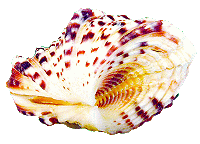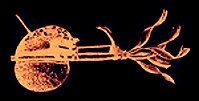From prehistoric times, man has used shells for tools. This practice has been born out by archaeological findings in ancient sites and still carries on even today. Some examples of these shell tools are:
|
Household dishes, cooking pots and utensils: cutlery, scoops, spatulas, etc. were often made from bivalves and larger gastropods such as the bailer (Melo (a Volute), whelk (Family??), Nautilus and turban (Turbinidae) shells. (Nautilus: Note: This is an example of where the Scientific and "common" names of an organism are the same. Sometimes, the common name comes first, and the person describing the organism just uses it, or turns it into a Latin word - but sometimes the Scientific name comes first, and the general public uses it just out of convenience!) |
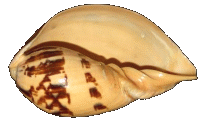 Melo melo |
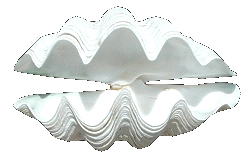 Tridacna gigas |
Food pounders were made from the crystalline stomach style (which the animal uses to help digest its food) " giant clam" (Tridachna gigas L.), in the South Pacific. |
| Storage containers for such things as perfumes, ointments and medicines were made from some of the larger bivalves and univalves such as the Nautilus. | 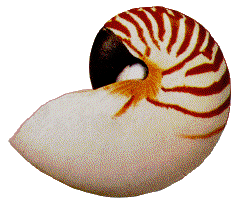 |
|
|
Oil lamps made from shells are a frequent find throughout the Middle East. There are examples of these made from bear paw shells (Hippopus hippopus Linne) and the spider conch (Lambis spp). They work by holding oil while the wick floats on the surface. |
|
Fishing gear: fish lures, octopus lures, hooks and sinkers were made from abalone, pearl shell and cowries.
|
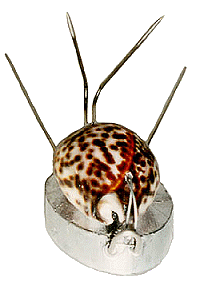 The new taco lure is still used today for fishing octopus |
-
Tweezers, tongs and claspers were made from bivalves (the two halves making them ideal for this!).
-
Farming tools shovels, plow blades and hoes for tilling the soil were made from hard, sharpened shell pieces.
-
Building tools: designed to split and smooth many building and thatching materials such as palm fronds and bamboo canes.
-
Adze, knife and axe blades were made from shells with sharpened edges.
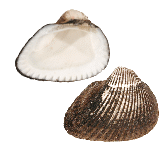 Noetia ponderosa |
Blades and scrapersfor cutting and skinning hides were made from shells such as the ark shell (family Arcidae) Note: Many of the "scientific" names of molluscs came from the author's idea of what the shell looked like. Arcidae, for example, came from the idea that their shells look like miniature versions of Noah's Ark! Many of the early "naturalists" (i.e., people who studied nature) were doctors, and some of the names they gave to interesting shells are quite "suggestive and naughty", to say the least!) |
| Drills, chisels, scrapers, sanders, etc. were made from various shells such as the Red Helmet shell (Cassis rufa L.) and were used in such trades as woodworking, farming and tool making. |
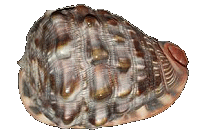 Cassis rufa |
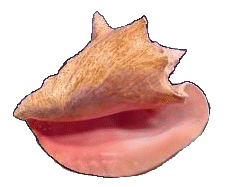 Strombus gigas |
Weapons such as spearheads and gouges were made from sharpened and shaped pieces of hard shells such as the Queen conch (Strombus gigas L.).
|
-
Bailing buckets made from "bailer" shells (Melo) are still in use by native fisherman in the South Pacific and Australia today - to bail out their boats!
